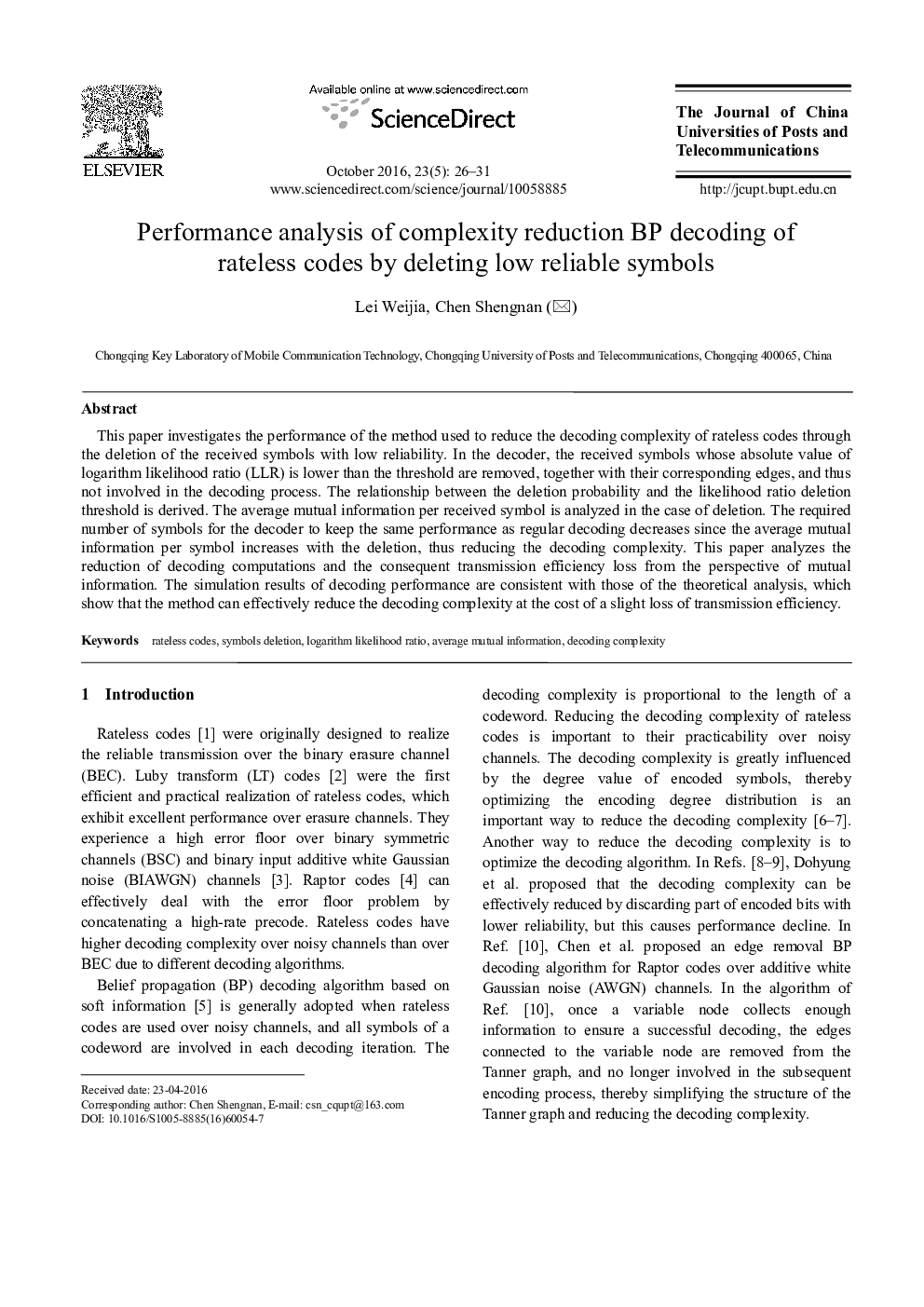| Article ID | Journal | Published Year | Pages | File Type |
|---|---|---|---|---|
| 7116991 | The Journal of China Universities of Posts and Telecommunications | 2016 | 6 Pages |
Abstract
This paper investigates the performance of the method used to reduce the decoding complexity of rateless codes through the deletion of the received symbols with low reliability. In the decoder, the received symbols whose absolute value of logarithm likelihood ratio (LLR) is lower than the threshold are removed, together with their corresponding edges, and thus not involved in the decoding process. The relationship between the deletion probability and the likelihood ratio deletion threshold is derived. The average mutual information per received symbol is analyzed in the case of deletion. The required number of symbols for the decoder to keep the same performance as regular decoding decreases since the average mutual information per symbol increases with the deletion, thus reducing the decoding complexity. This paper analyzes the reduction of decoding computations and the consequent transmission efficiency loss from the perspective of mutual information. The simulation results of decoding performance are consistent with those of the theoretical analysis, which show that the method can effectively reduce the decoding complexity at the cost of a slight loss of transmission efficiency.
Related Topics
Physical Sciences and Engineering
Engineering
Electrical and Electronic Engineering
Authors
Lei Weijia, Chen Shengnan,
